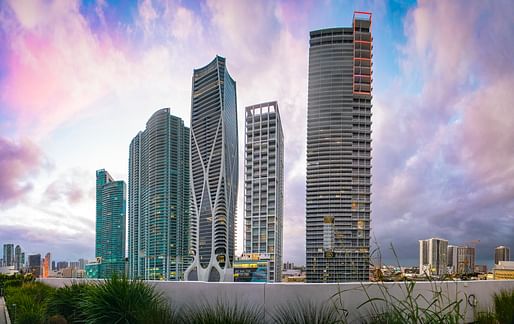

Miami is now number one on a list of the most expensive areas to own a home in the United States according to statistics published in the industry blog The Real Deal.
The city surpassed New York and Los Angeles in the February edition of RealtyHop’s Housing Affordability Index on the wings of a two-year trend that is being driven by an influx of residents from out-of-state and made worse by the stagnation of wages, which remains a nationwide barrier to homeownership in spite of some considerable recent local gains.
New renters have also been a contributing factor, leading to the biggest increases anywhere in the country on average, as per a recent report from the rental index Zumper.
“What we’ve been seeing since the pandemic is Miami is the destination for a lot of out-of-state residents. These people often bring in more money than locals. Miami has become increasingly unaffordable, especially for local residents,” RealtyHop data scientist Shane Lee told TRD before making the comparison to identical jumps in the “hot” Austin, Texas housing market.
The development of real property in the city that was largely an unpopulated mangrove before the early 1880s is, perhaps unironically, the “real” reason behind the city’s longstanding nickname. Miami has grown in stages beginning with the introduction of the city’s first telephone in 1899 and culminating in its contemporary place as the condo-rich, fourth-highest-density metropolitan area in the country. Rather than being a silver lining for a host of housing-related issues in the city, the rapid pace of its recent growth has morphed into an unexpected dilemma for developers high and low as they grapple with the eventually indelible encroachment of climate change.
Neighborhoods like Little Haiti and Liberty City are bearing the brunt of the economic consequences with correlations being meted out along the coast. As many as 918,000 condos on the state’s dual shorelines are more than thirty years old, leading to a parallel series of mass displacements that stem from moribund fears about a repeat of last summer’s tragic Champlain Towers collapse, which was caused in part by a steady flow of corrosive seawater into its foundation.
“You’d hope that this is the wake-up call,” former congressman Steven Geller recently told The New York Times regarding the city's future. “But I’d anticipate the same thing we’ve seen since the 1980s. The same thing, incidentally, that you see with mass shootings, or at least mass shootings back when they were rare. The lobbying groups go out and go: ‘Listen, now is really not the time to deal with this. Now is the time to pray and heal. Let’s talk about it next year.’ Then next year comes around, and guess what? It’s old news. Let me tell you: I want to be wrong, but my experience says, ‘Be realistic.’”
1 Comment
Miami badly needs rent control. It needs local governments that don't allow developers to use loopholes to call their units "workforce" or "low income" only to end up selling them at market prices.
Block this user
Are you sure you want to block this user and hide all related comments throughout the site?
Archinect
This is your first comment on Archinect. Your comment will be visible once approved.